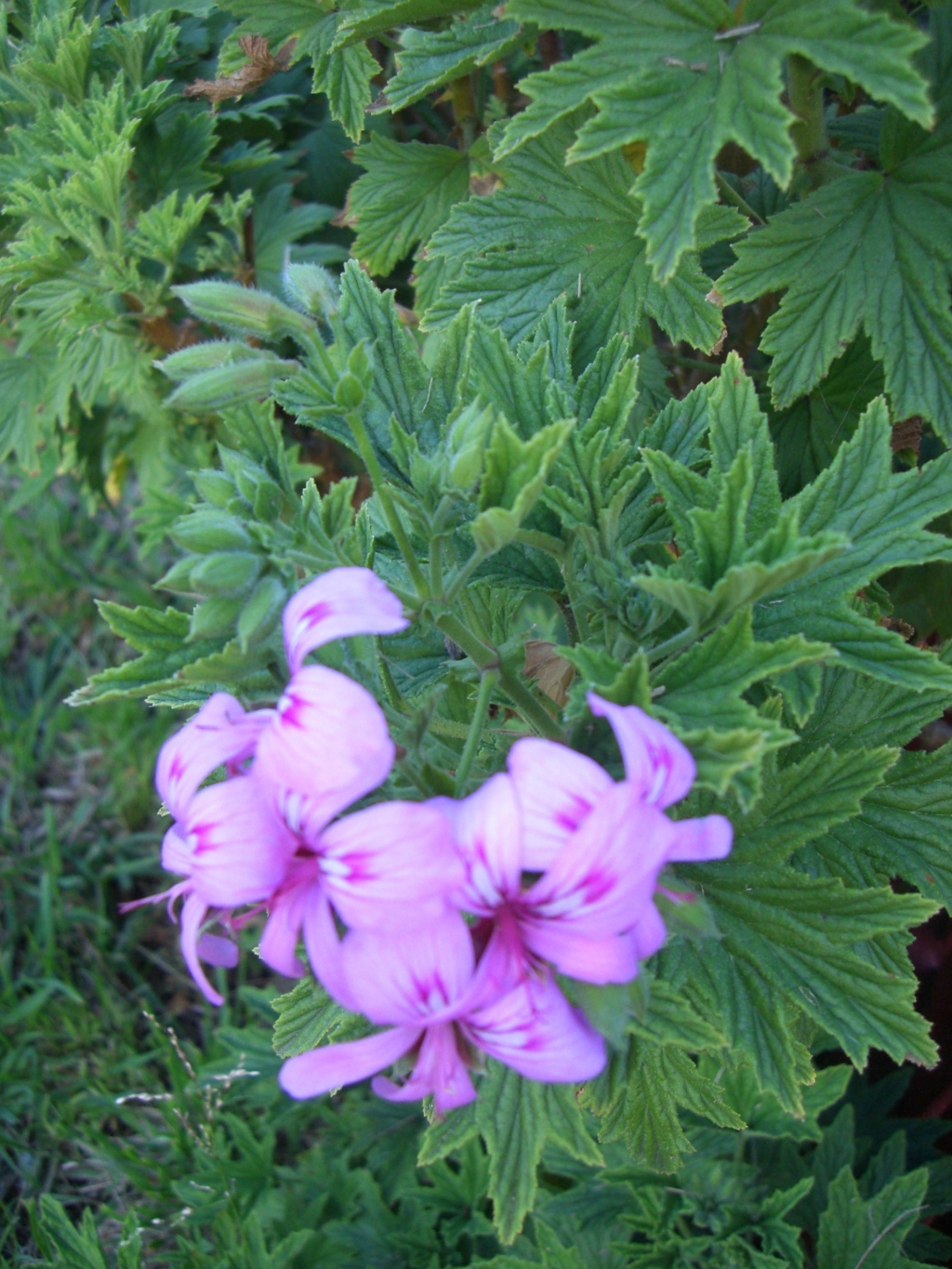Pelargonium capitatum
(L.) L’Hér. Rose-scented PelargoniumShrubby aromatic perennial to 100 cm high, softly hairy; stems semi-succulent; stems, peduncles and pedicels villous with eglandular hairs; roots fibrous. Leaves alternate or opposite, lamina ovate to cordate, 2–8 cm long and wide, partially to deeply 3–7-lobed, villous, margins obtusely toothed, often undulate; petiole 2–6 cm long. Umbels 7–12-flowered; peduncle 3–17 cm long; pedicels 3–8 mm long; sepals elliptic, 5–8 mm long, acute, apiculate, villous; sepal spur 3–4 mm long; petals obovate 10–18 mm long, pink, at least the larger pair veined and often blotched dark crimson; fertile stamens usually 7. Fruit c. 25–35 mm long; mericarps villous. Flowers Sep.–Jan.
GipP, CVU, EGL. Also naturalised WA, NSW, Tas. Native to South Africa. Weakly (or perhaps no longer) naturalised from gardens in Victoria, known from only a few pre-1900 collections on coastal dunes and cliffs on the Mornington Peninsula (e.g. Frankston, Sorrento), and a single specimen from Romsey.
Smith, L.P.; Walsh, N.G. (1999). Pelargonium. In: Walsh, N.G.; Entwisle, T.J., Flora of Victoria Vol. 4, Cornaceae to Asteraceae, pp. 233–236. Inkata Press, Melbourne.
 Spinning
Spinning



